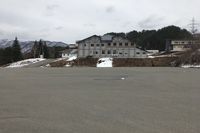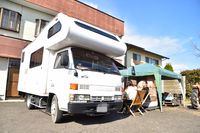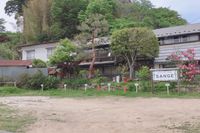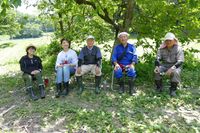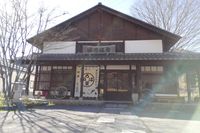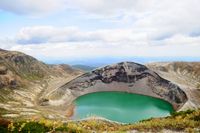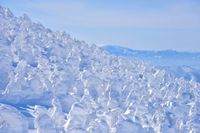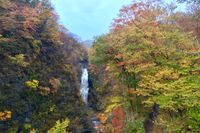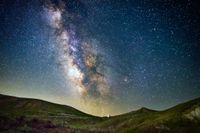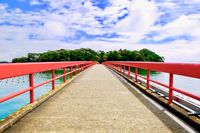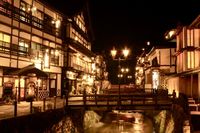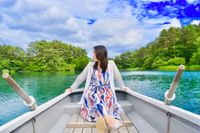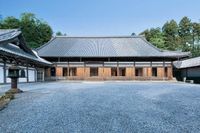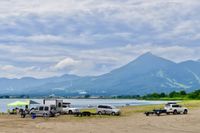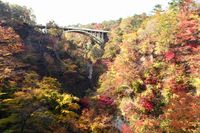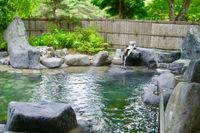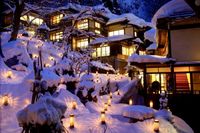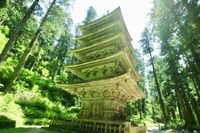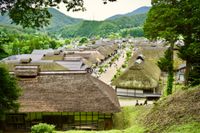Zao Fox Village
宮城県/白石市

Description
This is a zoo at the peak of Mount Zao in Minami-Zao. There are around 250 foxes of 6 types being raised here, with around 100 grazing in the fields. The owner opened this zoo in 1990 for the foxes (which were cultivated for fur) had no place to go. There are also rabbits, goats and ponies here too.
Homepage
Address
Nearby Car Night Spots
Nearby Activities
Ranking Stations
Shin Meishin Suzuka PA (inbound) RV Station Suzuka * With Power!
¥2,200〜
/ per nightMie Yamamotocho, Suzuka-shi
4.3
(155)(Bonfire BBQ) Chita Mihama Noma Beach Station
¥3,500〜
/ per nightAichi Noma, Mihamacho, Chita County
4.7
(42)Vanlife BASE | 45 min. from Narita Airport / Perfect for campervan travel/A seaside town rich in nature/Japanese countryside town/welcome traveler
¥7,000〜
/ per nightChiba Koseki, Kujukuri-machi, Sambu-gun
5.0
(61)Nearby Drive Spots
Okama Crater
This is a crater lake at the peak of Mount Zao, with an altitude of 1550m above sea level. As the water contains high levels of acid, there is no wildlife present, but the water shines a light green hue due to the acid levels. The name comes from the fact that the crater looks like a pot full of water.
Zao Onsen
Located at the western foot of Mount Zao, this is a hot spring with 1,900 years of history. It has characteristically acidic spring water and is known as "Princess water" due to its skin whitening effects (skin whitening seen as more favourable in Japan). As there is also a ski slope, skiing can also be enjoyed here in the winter. The area is famous for its views of the forest of snow covered trees.
Akiho Onsen
This is an Onsen located in Sendai. It is located within a fluvial valley formed by the fluvial terrace on Natori River. In the Kofun era(250-538), the 29th emperor, Kinmei was particularly found of this onsen and received official royal status as an "Miyu" onsen.
Jododaira Wetland
This is a large wetland in the Azuma mountain road. As the area is surrounded by mountains, making the air fresh, and as this blocks the light from the nearby city the area is ideal for stargazing. On a clear night, one can see around 6,000 stars with the naked eye, almost as if one is gazing directly into the universe. ※福島県 浄土平 © IKEMON750 クリエイティブコモンズライセンス(表示4.0 国際)https://creativecommons.org/licenses/by/4.0/
Matsushima
This is a group of about 260 islands in Matsushima Bay, one of Japan's three famous scenic spots. Four famous scenic spots of "spectacle, reverence, hiddenness and weather" called the "Matsushima Four Great Sights" are famous here. Also known as a moon viewing spot, this place fascinated great figures such as Date Masamune, Matsuo Basho, Einstein and others.
Ginzan Onsen
This is an onsen based in the eastern area of Yamagata prefecture. Historically, this area was prosperous for mining at Nobesawa Ginzan mountain, and Onsen became more prolific in the area from the Edo era(1603-1868). There are several wooden ryokan (lodgings) made from wood, that were constructed between the Taisho and Showa eras(1912~1989), and the area even now has an modern onsen village type atmosphere.
Goshikinuma
This is a small group of lakes of which there are more than 30, in the area of Ura Bandai, north of Mount Bandai. There area has swamps of various colors such as green, red, and blue which are colored as such due to the influence of the volcanic water quality and the surrounding plants and algae. Visitors can also enjoy boat rowing in the Bishamon Swamp.
Zuiganji Temple
This is a temple built by Date Masamune of the Rinzai sect in 1609. The Momoyama style main hall constructed by Masamune is designated as a national treasure, and two red and white plum trees known as "Garyu-bai" planted by Masamune himself are still present here. As the temple is located in Matsushima, one of Japan's three scenic spots, it was formerly known as Matsushima-dera.
Lake Inawashiro
This is Japan's fourth largest lake, situated in central Fukushima. The place is home to swans and swallowtail birds which are designated national treasures. There is a large camping area here, with Mount Bandai in the background, where visitors can enjoy various marine activities such as water boarding and water skiing.
Naruko Gorge
This is a canyon formed by the erosion of Arao River at the southern foot of Mt. Hanabuchi. A cliff with a height of 100 meters becomes full of autumn hues during the autumn leaf season. Ofukazawa Bridge is a symbol of Naruko Gorge, which is said to be the most spectacular point in Tohoku.
Naruko Onsen
This is a hot spring near Naruko Gorge in the northern part of Miyagi prefecture. The area is famous for people wearing "geta" (wooden clog type shoes) and visitors can borrow geta shoes here. The area is said to be so called due to the onsen being used for the baby of Minamito Yoshitsune and Satogozen.※Credit:旅と温泉の無料写真素材 おんふぉと http://on-photo.com/
Higashiyama Onsen
This is an old bath house in Aizu-Wakamatsu city. It has 1,300 years of history, and developed as an inner parlour house of the city during the Edo area(1603-1868). The place is famous as an area where the Vice President of Shinsengumi, Hijikata Toshizo healed wounded soldiers during the war. Geisha are still active around the town today.※Credit:旅と温泉の無料写真素材 おんふぉと http://on-photo.com/
Mount Haguro Five Storied Pagoda
This is said to be the oldest tower in the Tohoku area of Japan, built during the Heian era(794-1185). It is said to be a mountainous area housing a God, and the tower is situated on the path which is used by those traveling to the mountain as a place of worship and revering nature. The main God is known as the Kunitsu God, and once you have climbed the 2,446 stairs of 1,700 meters, you will be greeted by a 1,000 year old cedar tree.
Ouchi-juku
This is a area in southern Aizu which is an Edo-era(1603-1868) village which is "half agricultural, half residential". There are numerous thatched roof traditional houses which give the feeling of having travelled back in time to the Edo era. There is also a specialist "Spring onion Soba" shop where one uses spring onions to eat soba instead of chopsticks.

